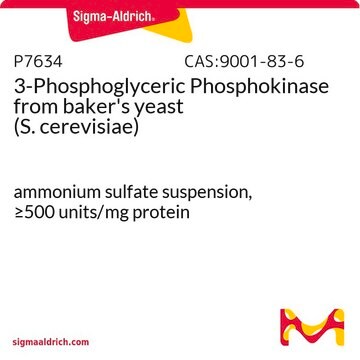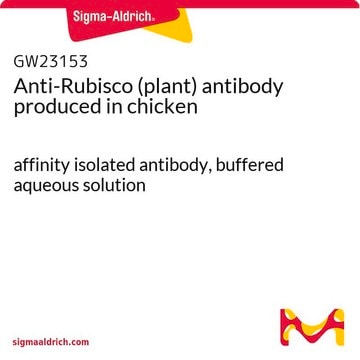R8000
D-Ribulose 1,5-Diphosphate Carboxylase from spinach
partially purified powder, 0.01-0.1 unit/mg solid
Synonym(s):
3-Phospho-D-glycerate carboxy-lyase(dimerizing), Rubisco
Select a Size
$193.80
List price$204.00Available to ship onApril 08, 2025Details
Select a Size
About This Item
$193.80
List price$204.00Available to ship onApril 08, 2025Details
Recommended Products
biological source
spinach
form
partially purified powder
specific activity
0.01-0.1 unit/mg solid
mol wt
557 kDa
storage temp.
−20°C
Related Categories
General description
pH optimum: ~7.9.
KM for CO2: ~0.45 mM.
Ribulose diphosphate becomes inhibitory at concentrations exceeding 0.7 mM. Orthophosphate and ammonium sulfate are competitive inhibitors. 3-Phosphoglycerate is a noncompetitive inhibitor.
Application
- as a test protein in pepsin digestion studies[2]
- as an innocuous or non-hazardous protein sample to test its effect on human intestinal epithelial cell lines[3]
- in isothermal titration calorimetry (ITC), and radiolabeled binding assays with abscisic acid[4]
Biochem/physiol Actions
Unit Definition
signalword
Danger
hcodes
pcodes
Hazard Classifications
Resp. Sens. 1
Storage Class
11 - Combustible Solids
wgk_germany
WGK 1
flash_point_f
Not applicable
flash_point_c
Not applicable
ppe
Eyeshields, Gloves, type N95 (US)
Choose from one of the most recent versions:
Certificates of Analysis (COA)
Don't see the Right Version?
If you require a particular version, you can look up a specific certificate by the Lot or Batch number.
Already Own This Product?
Find documentation for the products that you have recently purchased in the Document Library.
Active Filters
Our team of scientists has experience in all areas of research including Life Science, Material Science, Chemical Synthesis, Chromatography, Analytical and many others.
Contact Technical Service







